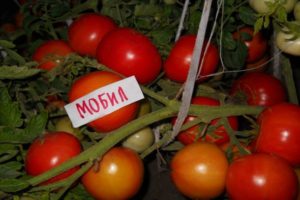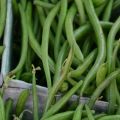Characteristics and description of the tomato variety Bear's paw, its yield
Different varieties of tomatoes are grown in the garden plots. Someone likes miniature pea-sized ones, while others prefer large giant varieties. One of these varieties is the Bear's Paw tomato. Due to its large size and shape, it has such an interesting name. This variety is not planted very often, since basically everyone loves medium-sized fruits.
More about the variety
Bear paw tomatoes most often grow well in warm areas. But you can also plant in the northern regions in greenhouses, while carefully caring.
The characteristics and description of this variety can be found in many books on gardening. These tomatoes are unpretentious, but they love warmth and good fertilization. They will survive dry summers just fine, but can freeze in the open field if it's cool. They hardly get sick.
The bush can grow up to one and a half meters. If it is too tall, then it is worth tying it up, as the vegetables hanging on it are quite heavy.
The first fruits ripen 3 months after planting the seedlings. They are very large, bright in color, pink or red. The weight of one fruit can be up to 750 grams. The skin is thin, soft and shiny. The pulp is juicy, red, tastes sweet and sour. The form has a ribbed surface. There are a lot of seeds inside.
There is also a variety of such large tomatoes called bear's claw. It is similar in shape, only slightly curved.

A good crop can be harvested from one bush if the plant is properly looked after. When buying seeds, it is worth asking for a description of its care.
How to plant
It is better to plant tomatoes in March. After sowing, cover with foil for a week. When sprouts begin to appear, place the container in a lighted place.
Plants should be planted if they are too large and interfere with each other. Fertilizing and airing is required. In two months it will already be possible to prepare them for planting in a greenhouse.
The land is prepared in advance: loosened, fertilized, watered. Bushes should not be planted close to each other. This will make it easier to approach them, and they will hurt less.
The yield will be high if you carefully care for the tomatoes, water it on time, cut off the stepsons.
Care features
Considering the description of the variety, the fruits ripen early. Since they are constantly growing, they need quality care. If the care is of poor quality, then you should not expect a good harvest.
- Tomatoes love good watering. You can even water them three times a month, but abundantly. A close stream or wells are used for water. Most importantly, do not spray with ice water.
- It is imperative to weed the weeds in the greenhouse, as they suck out nutrients and promote the reproduction of pests.
- Periodic loosening of the earth. This is done in the first days after planting, during flowering, and after - as soon as the soil becomes flat again.
- Fertilizing crops is important. During flowering, nitrogen should be included in the top dressing, and when the fruits grow - potassium, phosphorus. Peat, humus, sand, chicken droppings are also added to the ground.
- In the summer, during the day, you need to open the windows and doors of the greenhouse to ventilate it.
- Sometimes pinching is required, due to which the process of fruit ripening is accelerated. The processes and all the lower sheets are removed at least twice a month.
- Bushes that are too tall should be tied with ropes. In northern regions, it is better to raise the stem high off the ground, as the nights are cold and with dangerous dew.
Large fruits and tall bushes require more attention from gardeners. The result is a rich harvest.

What dangers happen
Plants of this species have excellent properties to resist diseases and pests. But still, due to the wrong care, troubles can happen to them.
They can be attacked by aphids, beetles, ticks, slugs, caterpillars, bears. In this case, the bushes should be treated with various agents until the insects are completely eliminated. You can find out about them from the sellers in the store.
Among the diseases are known late blight, fusarium, spotting, fungus, rot. Strong effective methods can be used during flowering. But during fruiting, it is better to treat with decoctions of chamomile, celandine, onions. Everything that grows in the greenhouse is sprayed and fed.
Gardeners' opinions
Reviews of summer residents about the shortcomings and advantages of this type of tomato are very diverse. Here are some of them.
Katerina: I really wanted to large tomatoes... I saw bear paw seeds on the market. And I thought, I will plant them, because in the picture they looked very beautiful, like a bear's paw. And I didn’t regret it. Very good harvest. And they ate fresh, and cooked a lot of adjika and juice.
Maxim: I have grown this particular variety for many years. I planted both in greenhouses and in open soil. They give a very good harvest. The fruits are huge and delicious. You don't need to water often. Such tomatoes are rarely salted, but we marinate them in jars, cutting them into four parts.

Love: I put a bear in a greenhouse for the first time. She looked after, fed. After the first fruits were harvested, the whole family went to rest for three weeks, upon arrival, nothing dried up, they gathered a ripe crop. A lot fell, but did not crack.
The bear's paw tomato variety is suitable for lovers of large fruits. Very tasty and healthy juices are obtained from it. And in salads, it gives a unique and bright taste. Observing all the rules for caring for this hybrid, you can enjoy fragrant tomatoes in summer and autumn.









